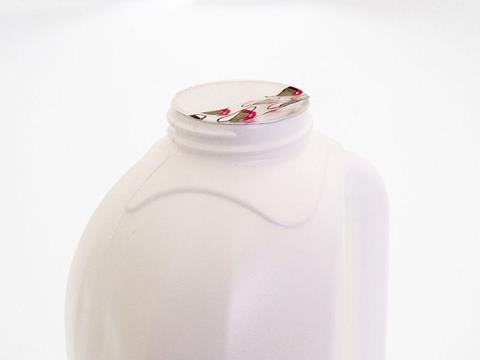
Consumer appetite for milk looks set to remain steady in Europe over the coming years, but reliable and secure containers will have to play a critical role for the dairy sector’s continued success, says Darren Dodd Serivce & Marketing Director at Selig.
Dairy is big business in Europe. It is the second largest agricultural sector in the bloc, representing almost a quarter of total agricultural output. All 28 member states produce milk and the collection of cows’ milk is increasing. More than 157 million tonnes were produced last year, according to the latest data from the bloc’s statistical office, Eurostat, which represents a 1% year-on-year increase. Drinking milk accounted for almost 20% of all the milk processed by dairies. This proportion is forecast to continue to grow until at least 2022 as the appetite for the product remains steady across the continent.
This is excellent news for farms, dairy production firms and retailers. Ensuring the highly perishable milk gets to stores and then onto consumers in its optimum state will be crucial if the maximum business benefits and customer satisfaction are to be realised. This means it has to be not only as fresh and high quality as possible, but also as safe and secure as possible in both the retail environment and consumers’ homes.
Packaging plays a critical role. The right container and a strong hermetic seal can extend the shelf life of milk from just a few hours to a considerable number of days. They can also prevent inconvenient leaks in stores and in consumers’ fridges. Perhaps most importantly, provide clear visual evidence of tampering for total confidence and peace of mind.
These requirements are, of course, not new and were behind the introduction of induction sealing on milk polybottles in the early 1990s. However, the types of sealing material and the application techniques have evolved considerably since then in line with developing consumer expectations and environmental targets.
The challenge for packaging firms lies in striking the perfect balance between making sure the seal is strong enough to withstand pressure during transportation and ensuring it is easily removable for all consumers, particularly those with dexterity, mobility and sight problems. The solution to this predicament is achieved by applying the right levels of pressure, heat and time during the induction sealing process, along with the use of the most appropriate lining material.
The latter is especially important when catering for the needs of consumers with varying degrees of ability. Bottle closure seals come in various designs, but some are easier than others to peel away. Foil liners with a small folded down side tab placed somewhere along the circumference can often prove to be a problem for people with limited dexterity. They offer little opportunity for the degree of grip required to pull away the seal cleanly and can sometimes become stuck around the lip of the bottle opening to make the task yet more difficult.
Alternative designs, such as those with a half-moon pull-tab, have been found to be far more user friendly. For example, the Lift ‘n’ Peel™ induction heat seal liner from Selig has been developed to be ergonomically easy to grip and open, while also being ultra-reliable, flexible and extremely strong.
The rest is down to the sealing process. Although no other processing or equipment is required beyond an induction heating machine, the key process conditions of pressure, heat and time must be calculated and observed to achieve optimal container sealing on a fast-moving filling line.
The most appropriate amount of pressure to use is determined by factors that include the design of the threads on the closure and container and the torque settings on the capping equipment. Once the required pressure has been identified, it must be applied uniformly around the entire rim of the container by the torque heads of the capper when placing the closure onto the filled container. Equally, the torque heads must be checked at least once a shift and it is important to prevent over-torque to avoid stripping the threads.
Meanwhile, the degree of heat to use depends on the size and characteristics of the induction element, the line speed and the air gap between the element and closure. The temperature of the liner needs to be sufficient enough to melt a thin polymer layer between the foil and the neck closure.
Finally, accurate timing is vital, both in terms of the period the closure passes beneath the induction coil and the subsequent cooling phase. The heating stage may raise the temperature to 200°C plus to the point of melting but the bond only starts to form when it cools down to approximately 130°C.
Accurately gauging and employing the three key process parameters along with selecting the right lining material for the application means robust results can be achieved consistently. With secure, tamper-evident packaging, consumer demand for fresh, high quality milk can be reliably satisfied and producers of dairy products can reap the business success that is to be reached in this sector.
















